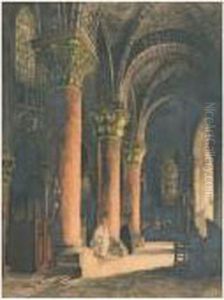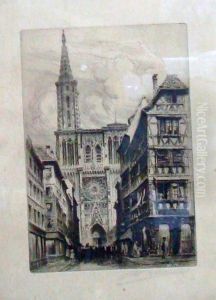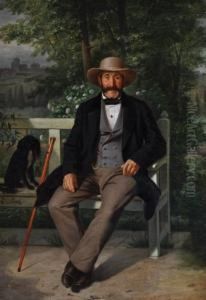Charles Pinet Paintings
Charles Pinet was a French artist known for his landscape paintings, particularly his depictions of Brittany and Paris. Born in Vitry-sur-Seine on October 26, 1867, Pinet was part of the Post-Impressionist movement, which developed in response to the immediate influence of Impressionism during the late 19th and early 20th centuries.
Pinet's work is characterized by its vibrant color palette and the use of light to capture the essence of the scenes he painted. He was particularly adept at portraying the changing moods of the sea and the sky, a skill that made his paintings of the Brittany coast highly popular. His artistic output includes urban scenes, with a number of works showcasing the streets and architecture of Paris, capturing the hustle and bustle of the city with a distinct charm.
Throughout his career, Charles Pinet exhibited his works at various salons and galleries, gaining recognition among art collectors and the public. He was a member of the Société des Artistes Français, where he exhibited regularly. His work was also shown at the Salon des Indépendants, an annual exhibition that was crucial in the development and recognition of new art styles and emerging artists of the time.
Despite his contributions to the Post-Impressionist movement, Charles Pinet remains less well-known than some of his contemporaries. Nonetheless, his paintings are appreciated for their beauty and technical skill, contributing to the rich tapestry of French art history.
Charles Pinet's life came to an end on November 29, 1932, in Paris. After his death, his work continued to be celebrated by art enthusiasts and collectors, and today his paintings can be found in various art museums and private collections. Although not as widely celebrated as some of his peers, Pinet's legacy lives on through his artistic achievements and the serene beauty captured in his landscapes and cityscapes.



